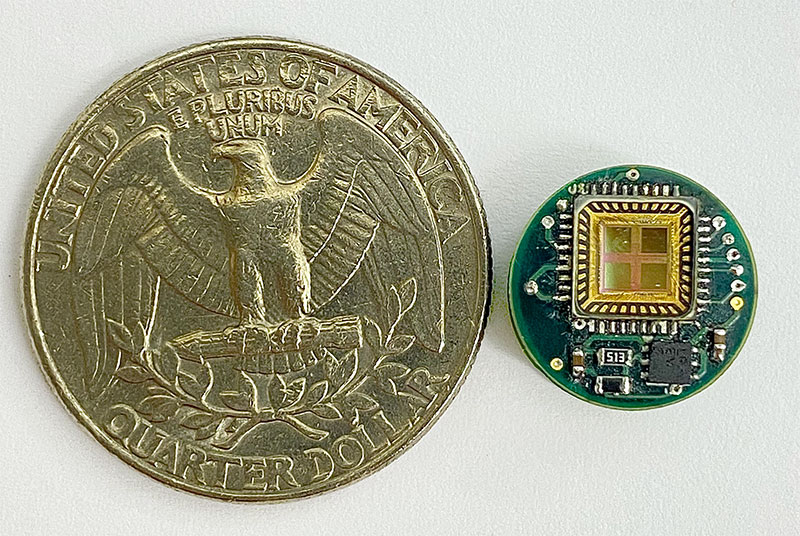Thanks to the work of Assistant Professor Rabia Yazicigil (ECE) and her colleagues at MIT, a swallowable sensor could someday replace endoscopy and colonoscopy. The pill-sized device would literally shed light on what’s going on inside the gastrointestinal (GI) tract of Crohn’s and other bowel disease sufferers.
Read more This Smart Pill Stays Inside Your Stomach and Monitors Digestion Up to a Month
MIT researchers previously developed a 1.5-inch capsule that contained a computer chip, a wireless transmitter and genetically engineered bacteria that light up when they come in contact with blood. The capsule could detect bleeding in the GI tract and send an alert to a smart phone, reports Patrick L. Kennedy in BU College of Engineering.
Yazicigil and her students at Boston University’s Wireless Integrated Systems and Extreme Circuits (WISE-Circuits) Laboratory, in collaboration with MIT, have decreased the capsule’s size to about that of a chickpea by designing an ultra-sensitive, nanowatt-level power, integrated photodetector and readout system on a chip. This transformative size reduction makes this smart pill much safer as it passes through the digestive system.
The proof of concept was presented at the Electrical and Electronics Engineers (IEEE) Custom Integrated Circuits Conference this past spring.
The principal investigators of the project are Yazicigil and MIT researchers Timothy Lu and Giovanni Traverso. Yazicigil’s PhD student Qijun Liu presented the paper at the IEEE event.
In the United States, about 3 million adults suffer from inflammatory bowel diseases (IBD), such as Crohn’s or ulcerative colitis. These conditions can cause severe diarrhea, abdominal pain, fatigue, weight loss and malnutrition, and they increase the risk of colon cancer.
The traditional method of searching the GI tract for warning signs is colonoscopy, but that only happens every year or two, and the preparation is not pleasant. Moreover, says Yazicigil, “an endoscopy is an image-based system—it doesn’t really measure the molecular disease biomarkers.”

A stool sample does measure biomarker, but by the time they exit the system, the most important biomarkers degrade.
The newly designed ingestible sensors are noninvasive and it’s as simple as swallowing a pill. Also, they monitor the gut in real time.
The bacterial sensors light up when they sense their target biomarkers; a chip converts this bioluminescence into electrical signals; and the data is sent to a nearby smart phone or tablet. “Think of this gadget as a wearable, but for inside the body,” says Yazicigil.
The main challenge faced by the researchers was the device’s power consumption. To conserve power, they designed a chip that switches on every 10 minutes for 16 seconds to take measurements, and for a mere 12 milliseconds to transmit the data, according to the BU College of Engineering.
“That discrete time approach rather than a continuous time approach saves us some power,” says Liu, the ENG PhD student.
The WISE-Circuits Lab team, working with the group at MIT who originated the capsule, have done in vitro testing of the streamlined version and are planning in vivo testing in animal models. “In vivo testing is critical for safety, and previous attempts with off-the-shelf components and large batteries made devices too large to be safe,” says Miguel Jimenez, research scientist at MIT. “The Yazicigil group’s custom, low-power design is an elegant solution to this challenge.”
“I think that’s very powerful,” says Yazicigil. “By collaborating with people from diverse backgrounds, we might actually contribute to society and help people better manage their conditions.”












